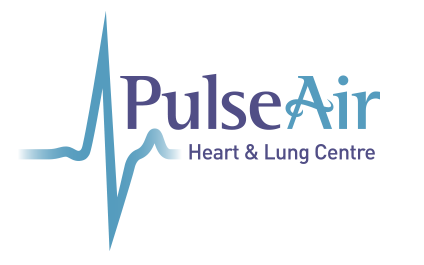Blood pressure is one of the most important indicators of heart health, but many people don’t fully understand what the numbers mean. Whether you’re monitoring your blood pressure at home or visiting your doctor, knowing how to interpret readings can help you stay on top of your cardiovascular health.
At PulseAir Heart and Lung Centre, we’re here to break it down for you!
What Do Blood Pressure Numbers Mean?
Blood pressure is measured in millimeters of mercury (mmHg) and consists of two numbers:
- Systolic pressure (top number): Measures the pressure in your arteries when your heart beats.
- Diastolic pressure (bottom number): Measures the pressure when your heart is at rest between beats.
Example: 120/80 mmHg
Healthy vs. Unhealthy Blood Pressure Ranges
|
Category |
Systolic (Top) |
Diastolic (Bottom) |
|
Normal |
Less than 120 |
Less than 80 |
|
Elevated |
120-129 |
Less than 80 |
|
High Blood Pressure (Stage 1) |
130-139 |
80-89 |
|
High Blood Pressure (Stage 2) |
140+ |
90+ |
|
Hypertensive Crisis |
180+ |
120+ |
If your blood pressure is consistently above normal, it’s important to speak with your healthcare provider.
How to Maintain Healthy Blood Pressure
- Stay active – Exercise helps lower blood pressure naturally.
- Eat a heart-healthy diet – Focus on whole foods, lean proteins, and low sodium.
- Manage stress – High stress can elevate blood pressure over time.
- Monitor regularly – Keeping track of your numbers helps detect changes early.
At PulseAir, we provide cardiac health services to help you manage and improve your heart health. Take control of your health — know your numbers and make heart-smart choices!
Learn more about echocardiograms, cardiology consultations, rapid chest pain clinic, 24-hour Holter monitoring, 24 hour blood pressure monitoring, and electrocardiograms on our website.


